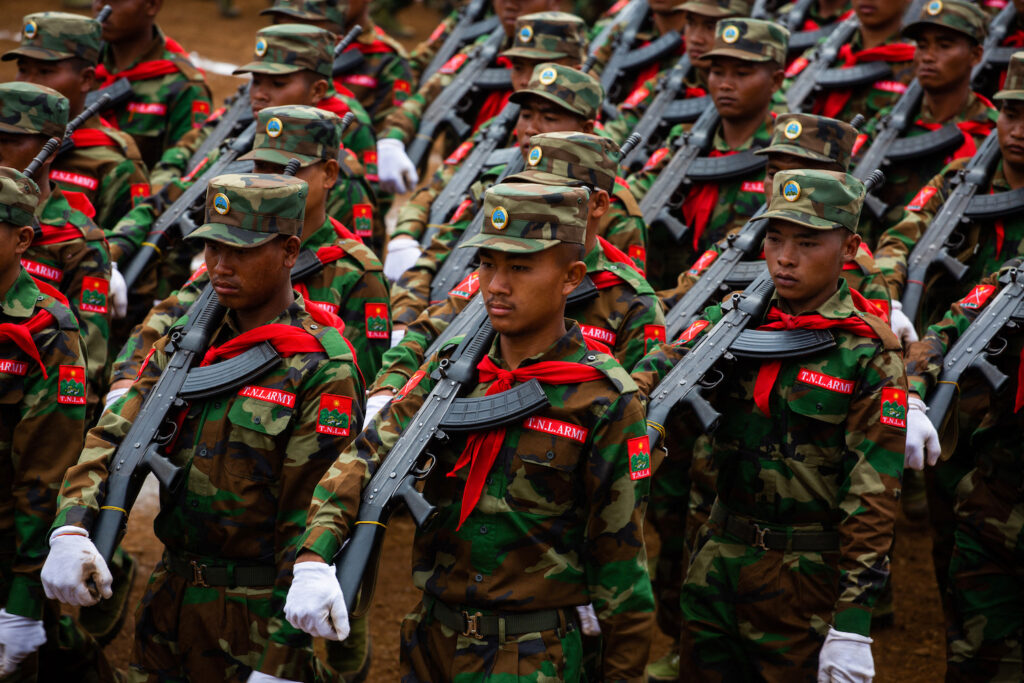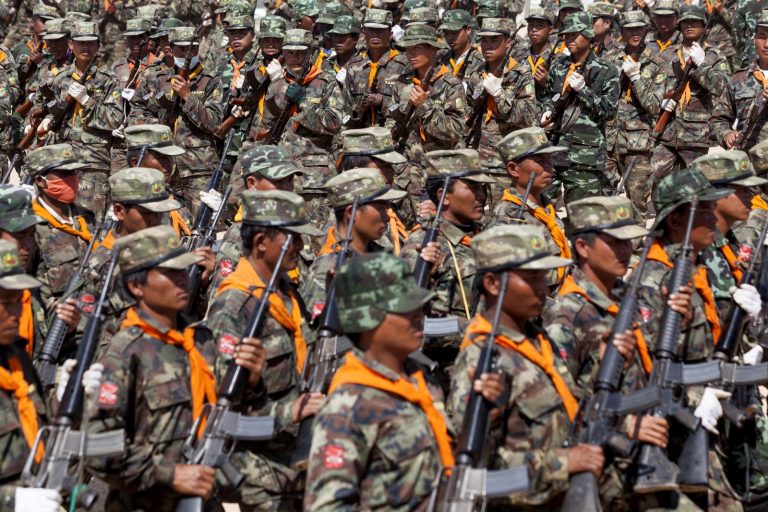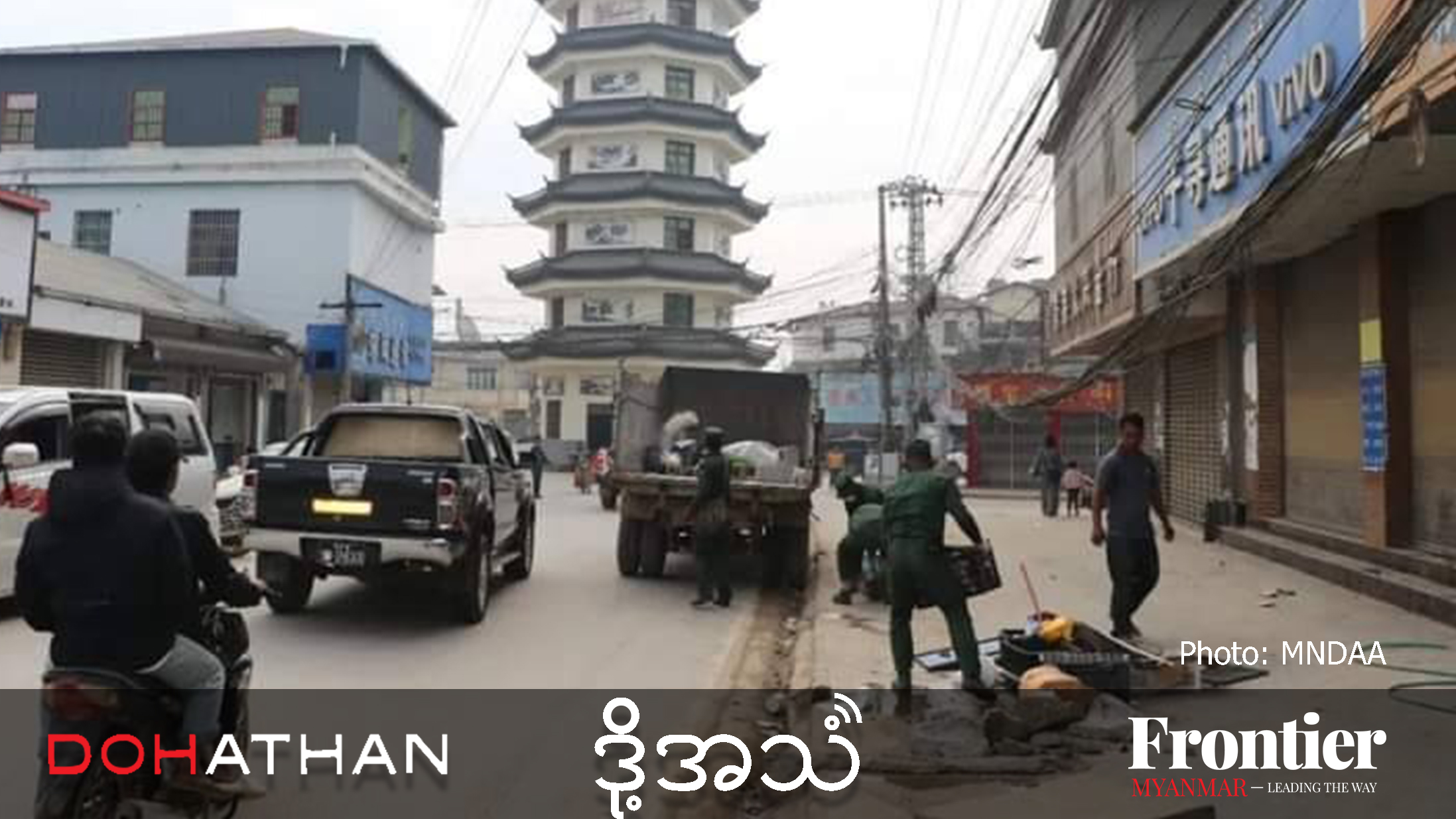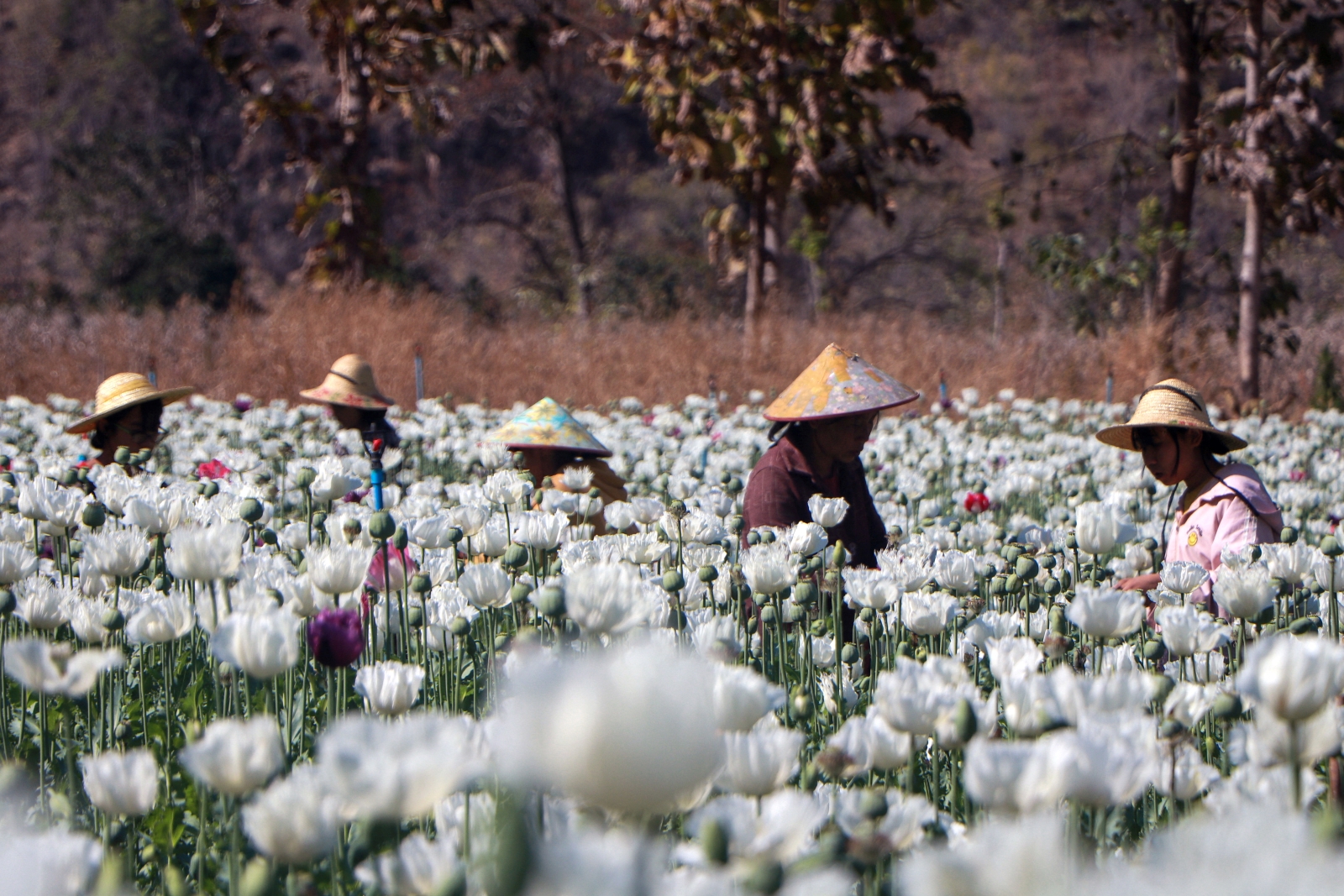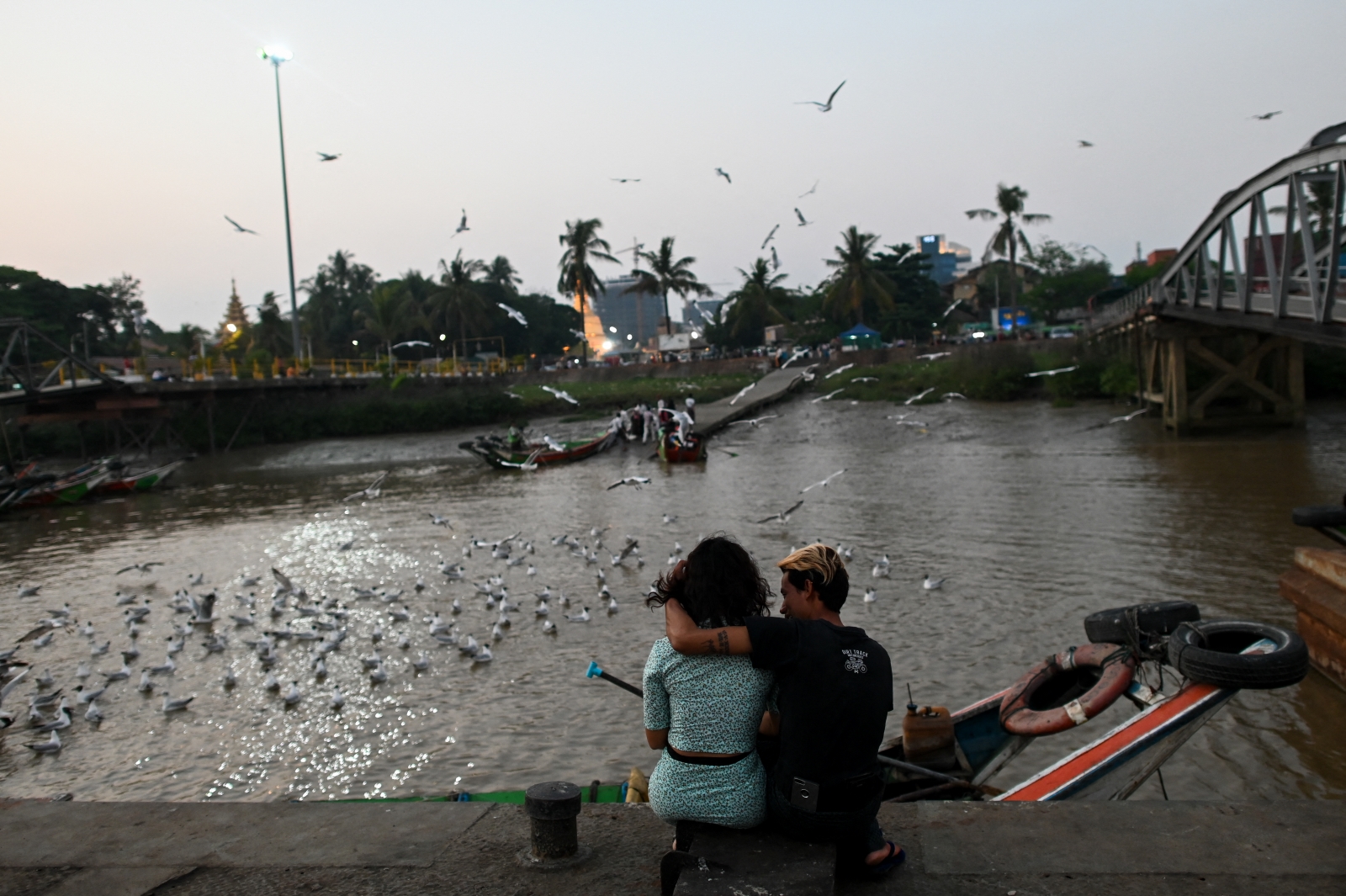OPINION
Deeply entrenched conflicts among a dizzying array of ethnic armed groups driven by territorial ambitions, economic interests and ethnic nationalism have prevented most of Shan from joining the anti-junta struggle.
By SAI WANSAI | FRONTIER
Widespread opposition throughout Myanmar to junta rule has led to the formation of a loose alliance between pro-democracy forces in the Bamar heartland and several ethnic armed organisations. Yet there are three states where most EAOs have not joined the fight: Mon, Rakhine and, most crucially, Shan, the biggest state in the country. Getting armed groups in Shan State on board presents the biggest challenge for the Spring Revolution.
Many Myanmar citizens and observers believe that only an alliance encompassing all ethnic and pro-democracy forces will be able to defeat the junta, known as the State Administration Council, or at least push it to a negotiated surrender. Some progress has been made in this regard, but there is a long way to go.
For example, in October 2021, resistance body the National Unity Government officially announced the formation of its Central Command and Coordination Committee, also known as C3C. This includes the NUG, Kachin Independence Army, Karenni National Progressive Party, Chin National Front and All Burma Students’ Democratic Front. The NUG also formed another command structure, the Joint Command and Coordination (also known as J2C), with the Karen National Union, which is not a member of the C3C.
But while EAOs from Chin, Kachin, Kayah and Kayin states have joined forces with the NUG and its People’s Defence Forces, insurgents in Mon, Rakhine and Shan states have kept their distance from them. The Arakan Army in Rakhine has sporadically fought the Tatmadaw in the last two years and has expressed sympathy for the Spring Revolution, but it has its own agenda and has expressed its desire to fight Bamar supremacy on its own. Meanwhile, the New Mon State Party has thrown in its lot with the SAC.
The situation in Shan, with more EAOs than any other state in the country, is more complicated. To start with, the armed groups in Shan are mostly busy with their own inter-ethnic, or rather inter-EAO, conflicts, mostly driven by survival instincts, resentment against other groups, territorial expansionism and a thirst for power. These dynamics have sometimes led them to act as proxies, willingly or not, of the giant regional power next door, China.
A fractured state
The EAOs in Shan can be roughly divided into two groups: the members of the Federal Political Negotiation and Consultative Committee, and the signatories of the 2015 Nationwide Ceasefire Agreement, initiated by the military-backed, nominally civilian government of President U Thein Sein and upheld by the subsequent administration led by Daw Aung San Suu Kyi.
The FPNCC is an alliance formed in 2017 by the AA, KIA, Myanmar National Democratic Alliance Army, National Democratic Alliance Army, Ta’ang National Liberation Army, Shan State Army-North and United Wa State Army. All are based in Shan State besides the KIA and AA, who mainly operate in Kachin and Rakhine states respectively.
The UWSA, MNDAA and NDAA stem from the defunct Communist Party of Burma after it imploded in 1989 due to a mutiny of the non-Bamar rank and file in northern Shan State. The SSA-N was allied with the CPB, and later became an UWSA ally, long before the formation of the FPNCC.
The TNLA traces its origins to the Palaung State Liberation Army, which agreed a ceasefire with the government in 1991 and disarmed in 2005. The Ta’ang leaders Tar Aik Bong and Tar Bone Kyaw founded the TNLA alongside the Palaung State Liberation Front to continue the struggle. After 2005, the TNLA was helped by the KIA, and now they are closely allied with the UWSA.
The three groups that signed the NCA, out of a total of 10 groups in all of Myanmar, are the Restoration Council of Shan State (Shan State Army-South), Pa-O National Liberation Organization and Lahu Democratic Union, which unlike the others doesn’t retain armed troops.
The RCSS was founded in 1996 by former members of the Mong Tai Army, which had been dissolved that year after existing for 11 years. The PNLO was established in 2009 with its headquarters in the Laybwer camp in southern Shan.
While all those groups share a similar ideology based on nationalism and federalism, conflict between some of them has been pervasive due to conflicting agendas and goals. The main obstacle to realise a comprehensive, ethnic-democratic alliance in Shan is the seemingly eternal conflict between them, although it’s necessary to take multiple other factors into account.
EAOs in Shan have shown no interest in finding a solution to the contentious identity politics plaguing the state, and some of their leaders want to keep the status quo in place because it benefits them. As a result, conflict between groups has become a deeply ingrained way of life, driven by territorial expansionism.
The most powerful actors in this apparent war of all against all are the Shan and Wa resistance armies. In 1996 the UWSA made a spectacular show of force by occupying, with the help of Myanmar military, two separate swathes of territory north and south of Kengtung in eastern Shan that it controls to this day. That event was the preeminent example of the inter-ethnic animosity and war-like attitude so embedded in the mindset of EAOs in the state.
In the same vein, in 2015 the SSA-S intruded into areas claimed by the SSA-N and TNLA in northern Shan, but in 2021 it was pushed back with overwhelming firepower by their combined forces, aided by the UWSA. It is believed that China also wanted the SSA-S out of northern Shan and gave indirect orders to expel its troops from that territory.
For its part, the TNLA tried to take all of Namhsan, Mantong and other townships in northern Shan, and even Mogok Township in northern Mandalay Region. That was yet another example of territorial expansionism, in this case at the expense of the Shan majority population. Sporadic clashes between the PNLO and SSA-S over many years can also be understood in this context.
A ‘Bamar affair’
Aside from their survival instincts and territorial expansionism, most of the EAOs operating in Shan see the civil war engulfing the country since the 2021 coup as a purely Bamar affair, a conflict between the SAC and NUG that is of little concern to them.
This connects with an extremely narrow ethnonationalism, by which most of them demand neatly demarcated ethnic states recognised at the Union level. This is both an impossibility and a recipe for unending inter-ethnic conflict, since there are virtually no ethnically homogenous areas of significant size in Shan.
Promoting a common Shan national identity for all ethnic groups in the state may well be the only possible way out of the inter-EAOs conflicts. It is important to recall that in February 1947, less than a year before Burma’s independence, the Shan National Day, flag and national anthem were agreed upon by local hereditary leaders (known as Saophas) and politicians in talks directed by an ethnic Palaung, Taungpeng Saohpa or Sawbwa Khun Pan Sing, as president of the Council of Shan State Saohpas.
Yet Shan is very far at the moment from establishing such an inclusive national identity. In part, this is due to the fact that the most powerful EAOs have become wealthy due to “ceasefire capitalism” – the allocation of concessions in a land rich in natural resources, most often at the expense of local populations, among the leaders of those groups that have signed truces with the Tatmadaw. The glittering cities of Panghsang and Mongla, in UWSA and NDAA territory respectively, are the most startling examples of this dynamic. When they can bargain at ease and reap the benefits of the current status quo, there is little incentive to join the anti-junta struggle.
So, while some of the EAOs may be sympathetic to the Spring Revolution, it is safe to assume they will stay out of the fight for the foreseeable future.
Sai Wansai is a lifelong Shan political activist turned journalist and writer, contributing to news outlets like Shan Herald Agency for News and Mizzima Weekly and research organisations such as the Transnational Institute.


